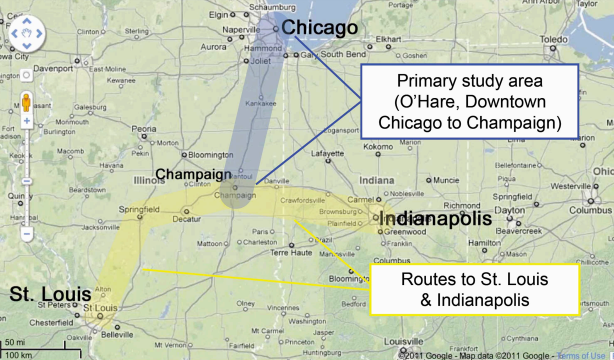Rail is not dead. Far from it!
In Fiscal Year 2013, a record 31.6 million passengers traveled on Amtrak on more than 300 daily trains – at speeds up to 150 mph – that connect 46 states, the District of Columbia and three Canadian Provinces. Other stats:
- It is the tenth ridership record in 11 years.
- Amtrak’s ridership has grown more than 50% since 2000.
- Ridership for all Northeast Corridor services reached 11.4 million passengers, the second best year ever, rebounding post-Hurricane Sandy.
“Amtrak moves people, the economy and the nation forward everywhere the trains go,” said President and CEO Joe Boardman. “In towns all across America, Amtrak brings economic opportunities for people, businesses and communities to grow and prosper,” stated Tony Coscia, chairman of the Amtrak board of directors.
State-supported services are vital links in the Amtrak national network. The power of increasing demand for passenger rail is recognized through state investments to improve service, speed and safety. In addition, states and communities realize stations served by Amtrak are anchors for economic development, catalysts for historic preservation and tourism growth, sites for commercial and cultural uses, and points of civic pride.
“This year’s record ridership was achieved station by station in the more than 500 communities across America that Amtrak serves,” said Boardman.
Share YOUR Amtrak travel story and pictures at AmtrakStories.com for a chance to win prizes. #AmtrakStories @Amtrak
But what about HIGH-SPEED TRAINS?
Feasible? Yes. Sustainable? Yes. Expensive? YES. The high-speed rail discussion continues across the United States with regional use in areas of California, Midwest, Texas, and the Northeast.

“220-mph HSR service from O’Hare Airport through downtown Chicago to Champaign-Urbana and on to St. Louis and/or Indianapolis is feasible and would be likely to cover its operating costs without subsidies.”
As a resident of Champaign (University of Illinois at Urbana-Champaign) and frequent traveler to Chicago, I’ve been following the HSRail projects with great personal interest. A recent study released by the University of Illinois and the Illinois DOT concluded that a 220 mph train connecting Chicago’s Union Station with either St. Louis or Indianapolis in about 2 hours is feasible and would “provide safe, modern, sustainable transportation for future generations.” Yes, please!
For more on recent progress of HSRail, see Eric Jaffe‘s new article in The Atlantic Cities, Will the U.S. Ever Get High-Speed Rail Anywhere?
____
Follow Me!
Twitter: @travelblawg
Facebook: facebook.com/travelblawg





I think that everything said made a bunch of sense. But, consider this, suppose you added a little content? I ain’t suggesting your content is not solid., but suppose you added something to possibly grab people’s attention? I mean Amtrak Ridership At All Time High… Again! HSRail Next? | TravelBlawg is a little boring. You could peek at Yahoo’s front page and see how they create post headlines to get people interested. You might try adding a video or a related picture or two to get readers interested about what you’ve got to say. In my opinion, it could bring… Read more »
Thanks for the feedback, as it is always appreciated! Your points are very valid and that is just what I’m hoping to work on. News is news (mostly), but blogging can be a chance to dive deeper into a subject, IMO.
Other times, I may not have time to develop all the content I would want (I have 3 other “real” jobs), but I desire to share the story with my readers in a less than developed format.
I’m keeping at it… thanks for reading! Travel safely!
@@travelblawg
I hate being a naysayer, but HSR is not feasible for the US. We are too large of a country. It would be “easy” to run it though the middle of the country but the coasts where it would be most beneficial are too developed to create new lines.
As to a nationwide, integrated HSRail system, I’m still trying to keep an open mind. However, I do agree with the studies for regional high-speed corridors, such as the UIUC study referenced. For example, see this map as to how combined HSRail and existing Amtrak service would co-exist: http://www.midwesthsr.org/vision